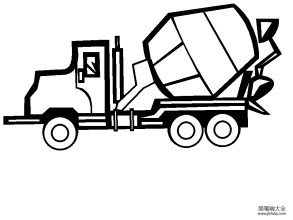Minimizing Repairs: Best Practices for Self-Loading Concrete Mixer Maintenance
- sophieaimix
- Nov 7, 2023
- 3 min read
Self-loading concrete mixers have become a staple in the construction industry due to their efficiency and versatility. However, like any heavy machinery, they require regular maintenance to function optimally and avoid unexpected breakdowns. Minimizing the need for repairs is essential to keep projects on schedule and maintain productivity. In this article, we will discuss best practices for reducing the chance of self-loading concrete mixer repairs.

Routine Inspections:
Scheduled inspections are a cornerstone of maintenance. Regularly inspect your self-loading concrete mixer to identify wear and tear, loose or damaged components, and signs of potential problems. Create a checklist for each inspection to ensure that all critical parts are examined thoroughly.
Operator Training:
Well-trained operators are essential for preventing unnecessary wear and tear on self-loading concrete mixers. Ensure that your operators are proficient in the correct operation and handling of the equipment. This includes proper loading, unloading, and maneuvering techniques to minimize stress on the machine.
Lubrication:
Lubrication is crucial for the longevity of self loading concrete mixer for sale. Ensure that all moving parts and components are adequately lubricated to reduce friction, prevent corrosion, and maintain efficiency. Follow the manufacturer's recommendations for the type and frequency of lubrication.
Cleaning and Maintenance of Mixing Drum:
The mixing drum is a critical component of self-loading concrete mixers. Regularly clean and inspect the drum to prevent the buildup of hardened concrete or other materials. Cleaning prevents excessive weight and imbalance, which can strain the machinery and lead to repairs.
Tire Maintenance:
Tire maintenance is essential to prevent unexpected breakdowns. Inspect the tires for signs of wear, damage, or low pressure, and replace them as needed. Properly inflated and well-maintained tires are crucial for stability and maneuverability.
Electrical and Hydraulic Systems:
Self-loading concrete mixers often rely on electrical and hydraulic systems. Regularly inspect and maintain these systems to ensure proper functionality. Loose wires, damaged hoses, and hydraulic fluid levels should be checked and addressed as necessary.
Adherence to Load Capacity:
Exceeding the load capacity of a self-loading concrete mixer can lead to premature wear and tear, as well as potential damage to the equipment. Always operate the mixer within its specified load capacity to prevent overloading and strain on critical components.
Environmental Considerations:
Environmental factors can impact the longevity of self-loading concrete mixers. Store the equipment in a sheltered area or use covers to protect it from rain, snow, and direct sunlight. Exposure to extreme weather conditions can accelerate wear and rusting.
Regular Calibration:
Calibrating the equipment ensures that it operates accurately and efficiently. Calibrate the sensors and weighing systems to maintain precise measurements. Inaccurate measurements can lead to excessive wear due to overuse or improper mixing.
Record Keeping:
Maintain detailed records of inspections, maintenance, and repairs. These records provide a historical perspective on the equipment's condition, helping you identify patterns and areas that require additional attention. A record-keeping system ensures that maintenance is consistently performed.
Emergency Kits:
Prepare emergency kits that include spare parts, tools, and equipment required for quick repairs on-site. Having these kits readily available can prevent downtime by allowing operators to address minor issues immediately.
Professional Servicing:
Regular professional servicing by qualified technicians is essential. Periodically schedule comprehensive servicing to address wear and tear, check for underlying issues, and make necessary adjustments.
Stay Informed About Software Updates:
If your self-loading concrete mixer has software components, stay informed about software updates provided by the manufacturer. Keeping the software up-to-date can help enhance the performance and reliability of the equipment.
Conclusion:
Minimizing the chance of self-loading concrete mixer repairs requires a proactive approach to maintenance and operation. Regular inspections, operator training, proper lubrication, cleaning, tire maintenance, and adherence to load capacity are key aspects of keeping the equipment in optimal condition. Additionally, environmental considerations, calibration, record-keeping, emergency kits, professional servicing, and staying informed about software updates all contribute to reducing the likelihood of unexpected repairs. By implementing these best practices, you can maximize the lifespan of your self-loading concrete mixer and maintain productivity on construction sites.






Comments